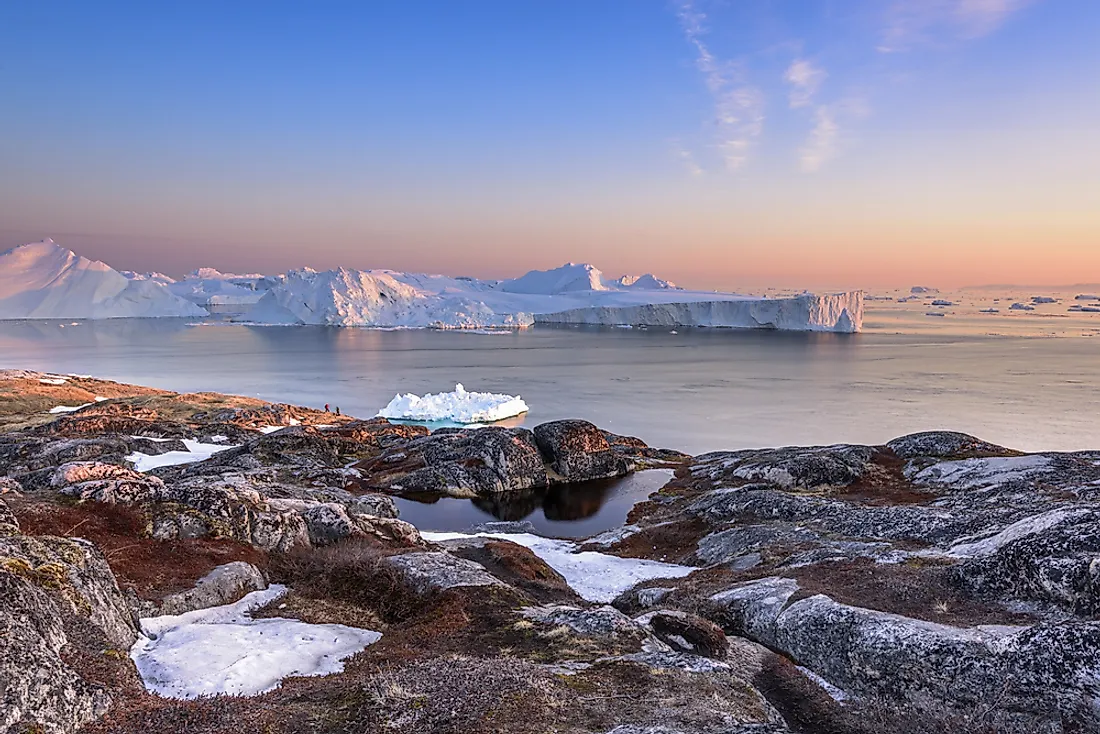What Is An Ice Cap Climate?

An ice cap climate is a type of polar climate in which the temperature never goes above 32 °F, which is the freezing point. This climate occurs in the polar regions, in places such as Greenland and Antarctica (the coldest continent on the planet), as well as the tops of some of the highest mountains on Earth. Additionally, some parts of the northern regions of Russia and Canada also experience ice cap climate. Another area includes a section of the Arctic Ocean, close to the North Pole. Ice cap climate regions are usually covered with a permanent layer of ice throughout the year. Due to this ice, no vegetation grows, but some animal life with special adaptations may be present. However, this scarce animal life gets its food mostly from oceans that extend to these areas or on the fringes of such areas. Due to the extreme climate, areas that experience ice cap climate are not suitable for permanent human habitation, although some temporary research stations have been established.
Distinction From Tundra Climate
Using the Köppen climate classification system, ice cap climate is written as EF. A distinction should be made between the ice cap climate and the tundra climate, which is denoted as ET. Unlike the ice cap climate, a tundra climate has summer seasons during which temperatures go above the freezing point for a number of months. These temperatures in the summer prevent ice from accumulating and forming ice sheets, which is why areas with tundra climates have vegetation. The ice cap climate is the coldest type of climate, and the lowest temperature ever recorded on Earth was about −128.6 °F in Vostok, Antarctica.
History
Historically, ice cap climates only existed during ice ages. It is believed that Earth has experienced at least five ice ages. Interestingly, even in places with higher latitudes, the Earth has always been free of ice in periods outside of the ice ages. Therefore, based on these criteria, the Earth is currently experiencing an ice age since parts have permanent ice caps. A number of factors including atmospheric changes, energy from the Sun, meteoric impacts, volcanic action, and the arrangement of the continents can cause an ice age.
Scientists estimate that Earth last experienced an ice age with ice caps on both the North and South poles approximately 600 million years ago. The ice cap at Antarctica was formed after Antarctica and South America split, which resulted in the formation of the Antarctic Circumpolar Current. One factor that led to the formation of the Arctic ice cap was the Azolla event, which occurred after a significant number of ferns in the ocean died and sank, but did not decay on the ocean floor, thus trapping carbon dioxide below the ocean. Another popular theory associated with the ice cap climate is the Snowball Earth hypothesis, which suggests that the entire Earth experienced an ice cap climate about 650 million years ago.
Habitat
Forms of life are relatively scarce in ice cap climate regions, as described above. However, the fringes of such regions usually experience some forms of life, as plants such as lichen and mosses grow. Similarly, animals such as polar bears and penguins can live in these fringe areas. In addition, subglacial lakes also exist and are suspected to have significant animal life.











